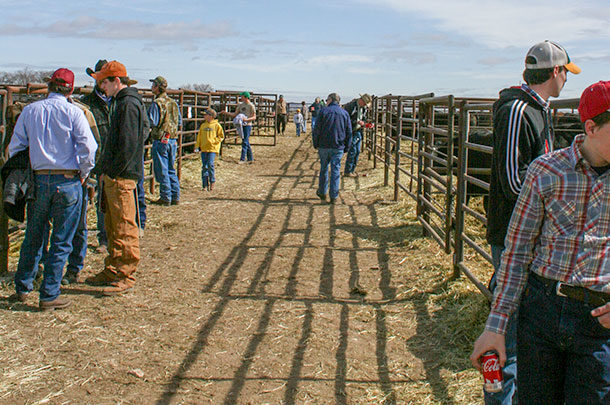Aaron Berger of the University of Nebraska serves as an extension educator. Berger is well versed in bull sale procedures. He gave his opinion and input on important thoughts to keep in mind while sticking to a budget while attending a bull sale.
“I think, first, it’s important for people who are looking to buy their next herd sires to clearly identify the traits they are looking for,” Berger says.
“First, that’s looking at ‘What is the market for the calves I’m producing?’ and deciding what you’re wanting as a producer. Are you looking to identify sires to produce females [that will go back into your herd] with the objective to produce steers to be sold or marketed?
“Are you looking for terminal bulls to sire calves to either be retained through the feedyard for feeding or sold at weaning or as yearlings? I think clearly identifying their breeding objective and what they want is important.”
Another key factor of attending a bull sale is knowing your budget and knowing just how much you will be getting out of what you put in.
“I think as you identify the thresholds you are looking for, it’s important to evaluate what you’re getting back or what you’re hoping to get back,” Berger says. “At the University of Nebraska, we have our beef.unl.edu website. On this website, we have a tool called the breeding cost calculator.”
The breeding cost calculator can be found at the University of Nebraska – Lincoln Extension website and is a spreadsheet where you can see if you can spend a certain amount of money on a bull and then factor the bull’s annual maintenance and upkeep, how many years are you planning to use the bull and how many cows are you planning to expose the bull to. This tool lets the average producer dive into what it costs per calf produced.
“The second objective is looking at what are you willing to spend. You need to realize, when you’re evaluating a budget, how much are you willing to spend for genetic traits based off of your needs,” Berger says. “I would say ranking bulls at a sale is a beneficial practice and thinking about ‘If I can’t get my first pick, then what’s my second pick?’ and ‘What price am I willing to pay?’”
As far as going over your set budget, Berger says, “Producers need to keep in mind there’s a lot of genetics available today. When you’re buying a bull, you’re not only buying genetics, you’re buying into a program. It’s about understanding what your price cap is and what you’re comfortable with spending to get the genetics you need for your program.”
Berger says when assessing your needs, really consider what you’re wanting a bull to do. Do you want your bull to sire 20 to 30 cows for four years, or do you want to keep him around a little longer and use him to collect semen?
“After assessing your needs, the cost per calf produced starts to change pretty drastically and might influence how much you’re willing to spend,” Berger says. “Overall, it really comes back to understanding your breeding objective and cost of production.” ![]()
Mayzie Purviance is a freelance writer based in College Station, Texas.
PHOTO: Properly assessing your genetic needs from a bull means following a budget, and ranking the sires you see as you head into the sale. Staff photo.








